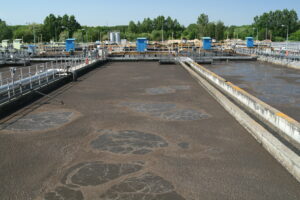Huge potential in wastewater: Energy production from organic material can make the sector self-sufficient
Day by day, the energy accounts of many Danish wastewater treatment plants are looking better and better. Consequently, many wastewater companies look into a future, with potential energy self-sufficiency.
Wastewater is increasingly becoming a resource that can be utilised and contribute to the green transition – thanks to new technologies and innovative thinking. On one hand, new technologies that save energy and make the plants more energy efficient are continuously implemented. On the other hand, new methods of producing energy – e.g. biogas – constantly increase productivity in the sector.
In other words, the potential gets bigger and bigger to a certain level. This means that wastewater treatment plants in Denmark are getting better at utilising the resources in the wastewater. Not only can they produce the energy they need to treat the wastewater, they are also able to produce enough energy to sell the excess.
| Fact box: How to transform wastewater into energy |
|
Better utilisation of resources and production of energy is high on the agenda at wastewater treatment plants in Denmark. It is intrinsic to the way Danish wastewater companies think today: That wastewater is a resource and is no longer perceived a waste product.
This development is beneficial to the green transition.
Climate legislation expedites the development
On 16 June 2020, the Danish Government with bipartisan support from the Parliament published a new climate agreement for a green waste sector and circular economy as a part of the specific execution of the Climate Act. The agreement sets a direction for the country’s wastewater companies. Among other things, it focuses on the energy consumption in the sector, energy production, and possible export potentials.
It is especially the large wastewater companies that treat significant amounts of wastewater, who are now able to boost their bottom line in regards to their energy accounts. In many places around Denmark, the development is already in motion.
New report leads the way
A new report devised by NIRAS and one of Denmark’s largest utility companies (VandCenter Syd) for the Danish Environmental Protection Agency outlines both potentials and challenges in the wastewater sector’s energy- and resource utilisation. The report was created based on reviews of eight treatment plants. It will serve as an inspirational catalogue for treatment plants and summarise a long list of opportunities, methods, and technologies for increased energy and resource utilisation.
Broadly speaking, there is a tremendous potential to save and produce energy – and thereby also reduce CO2 emissions – via energy optimisation of wastewater treatment plants. The report highlights a number of these opportunities and technologies – and some of which are completely obvious, with initiatives that are both profitable and have short pay-back periods.


